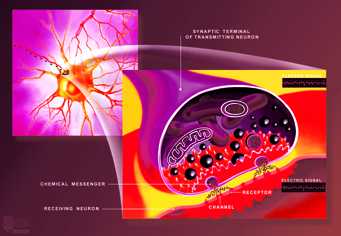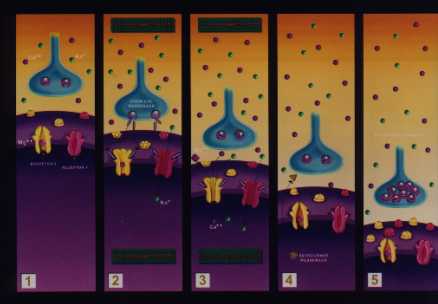How is a single synaptic contact of a complex neural circuit made and how does it work? At the synapses, the electric signal carried by the transmitting neuron, is converted into a chemical message which, in turn, elicits a new electrical signal in the receiving neuron. The enlargement (Fig. 1) shows that this happens thanks to vescicles releasing a chemical messenger. It binds to receptor proteins of the receiving neuron and modifies their structures, allowing the flow of charged ions through channels and changing the membrane electric potential. This new electric signal is then transmitted to a third neuron and so on.
Fig. 2 illustrates an amazing property of synapses: they are plastic, i.e. they can increase or decrease the strength of their transmission. In the case illustrated, the progressive recruitment of receptors, increases the electric signal elicited in the receiving neuron. This may lead to cross-talking between the two neurons, with the final result of permanently potentiating the transmission (more chemical messenger is released each time, and more receptors are ready to catch it). These plastic properties of synapses are viewed as the key element of the neural circuits in the processes of learning and remembering.
1) Synaptic terminal.
2) Synaptic plasticity.

